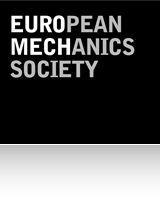509 – Vehicle aerodynamics
Date:
24 March 2009 – 26 March 2009
Location:
TU Berlin, Germany
Chairperson:
Dr. Martin Schober
MLN/TSSA Bombardier Transportation
Am Rathenaupark 16761
Hennigsdorf
Germany
phone: +49 3302 89 3405
fax: +49 3302 89 3669
email: Martin.Schober@de.transport.bombardier.com
Co-chairperson
Prof. Lennart Löfdahl
Chalmers University, Sweden
Dr. Christian Navid Nayeri
TU Berlin, Germany
With the increasing service speed of modern high-speed railway traffic, aerodynamic aspects are gaining importance. The aerodynamic research topics comprise both pure performance improvements, such as the continuous lowering of aerodynamic drag for energy efficiency, as well as safety relevant topics, such as cross-wind stability. The latter topic was most recently brought to attention when a swiss narrow-gauge train overturned during the severe storm Kyrill in january 2007. The shape of the train head usually has largest influence on cross wind stability. Slipstream effects of passing trains cause aerodynamic loads on objects and passengers waiting at platforms. The strength of the slipstream is determined by both the boundary layer development along the length of the train and the wake developing behind the tail of the train. Since high-speed trains can be considered to be as smooth as technically possible, attention is drawn to the wake region. The wake of the train again is also one important factor for the total drag of a train.
Due to the fact that trains are bidirectional, optimisation of the leading car of a train with respect to drag and cross wind performance while simultaneously minimising the wake of the train for drag and slipstream performance is a great challenge. Modern optimisation tools are used to aid this multi-parameter multi-constraint design optimisation in conjunction with both CFD and wind tunnel investigations.
Since many of the aerodynamic effects in the railway sector are of similar importance to road vehicles, the aim of the colloquium is to bridge the application of shape optimisation principles between rail- and road vehicles.
Due to the fact that trains are bidirectional, optimisation of the leading car of a train with respect to drag and cross wind performance while simultaneously minimising the wake of the train for drag and slipstream performance is a great challenge. Modern optimisation tools are used to aid this multi-parameter multi-constraint design optimisation in conjunction with both CFD and wind tunnel investigations.
Since many of the aerodynamic effects in the railway sector are of similar importance to road vehicles, the aim of the colloquium is to bridge the application of shape optimisation principles between rail- and road vehicles.
